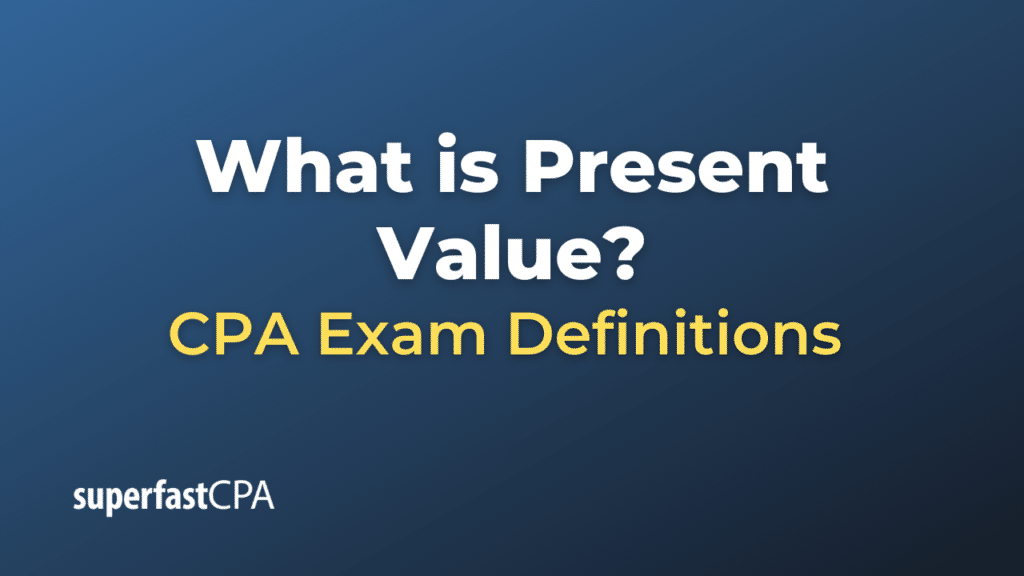Present Value
Present value (PV) is a financial concept that describes the process of determining what a future sum of money is worth in today’s dollars, given a specified rate of return or discount rate. The idea behind present value is based on the time value of money principle, which states that a dollar today is worth more than a dollar at a future date.
The present value is calculated using a formula known as the present value formula:
PV = FV / (1 + r)^n
Where:
- PV is the present value
- FV is the future value
- r is the discount rate (or rate of return)
- n is the number of periods
The calculation takes into account both the time value of money and risk. The longer the time period and the higher the discount rate, the lower the present value of a future sum will be. This is because money loses its purchasing power over time due to inflation, and there’s a risk that the future sum might not be received.
Present value is a critical concept in many areas of finance, including investment analysis, capital budgeting, bond pricing, and financial planning. It’s used to compare the value of money today with the value of money in the future, allowing individuals and companies to make informed decisions about investments, loans, and other financial commitments.
Example of Present Value
Suppose you are offered two options:
- Receive $10,000 today
- Receive $10,000 after 5 years.
To make an informed decision, you’ll want to find out what the $10,000 to be received in 5 years would be worth today, given a certain rate of return.
Let’s say the appropriate discount rate for this situation (which could be based on interest rates, investment alternatives, or inflation estimates) is 5% per annum.
We can use the Present Value formula:
PV = FV / (1 + r)^n
Where:
- FV is the future value = $10,000
- r is the discount rate = 5% or 0.05
- n is the number of periods = 5 years
So,
PV = $10,000 / (1 + 0.05)^5 PV = $10,000 / 1.27628 PV = $7,835.26
So, the present value of $10,000 received 5 years from now at a 5% discount rate is approximately $7,835.26.
This means that if you can earn a 5% return on your investments, getting $10,000 today is effectively the same as receiving $7,835.26 right now and allowing it to grow for 5 years.
If you’re offered the choice between $10,000 today or $10,000 in five years, this calculation tells you that, assuming a 5% rate of return, the first option is more valuable because the $10,000 today is worth more than $10,000 in five years. The present value calculation helps you make an apples-to-apples comparison between money now and money in the future.













